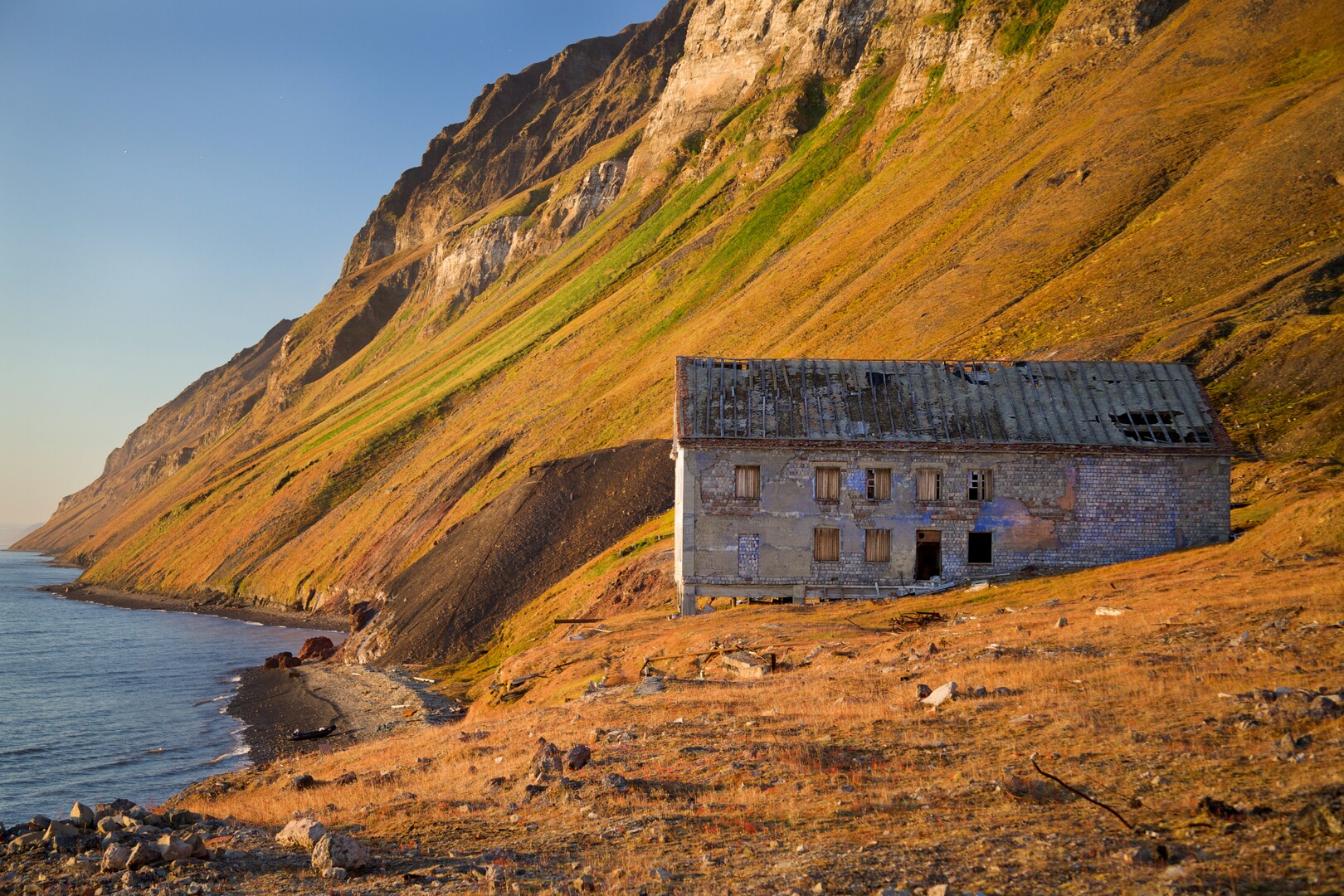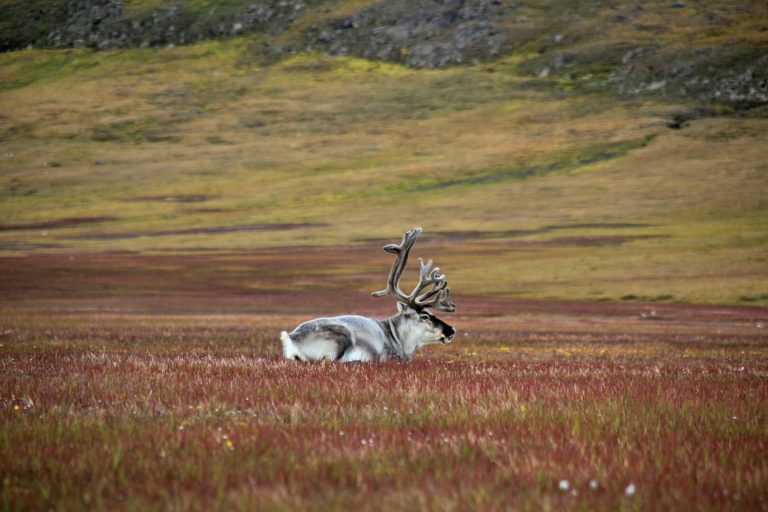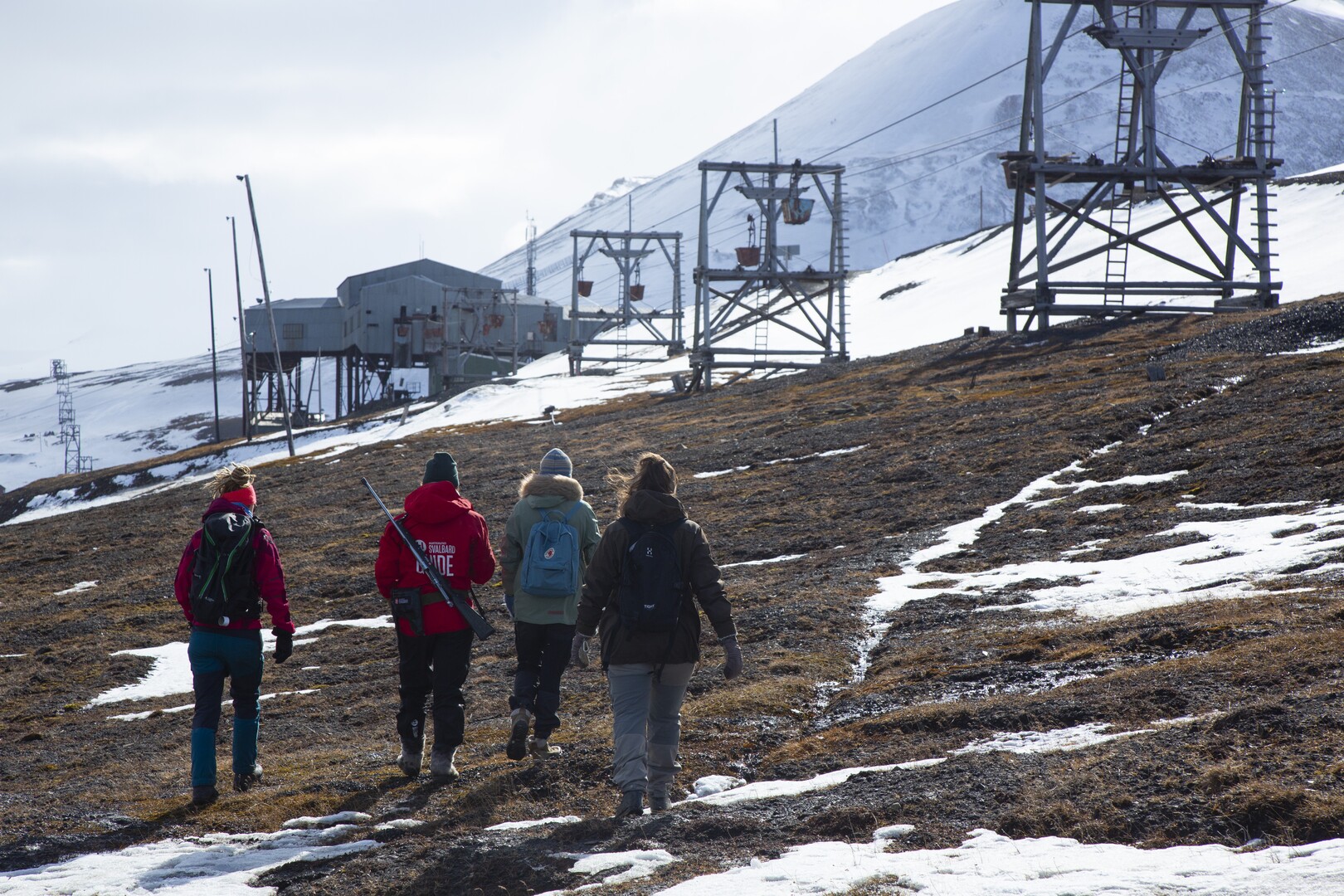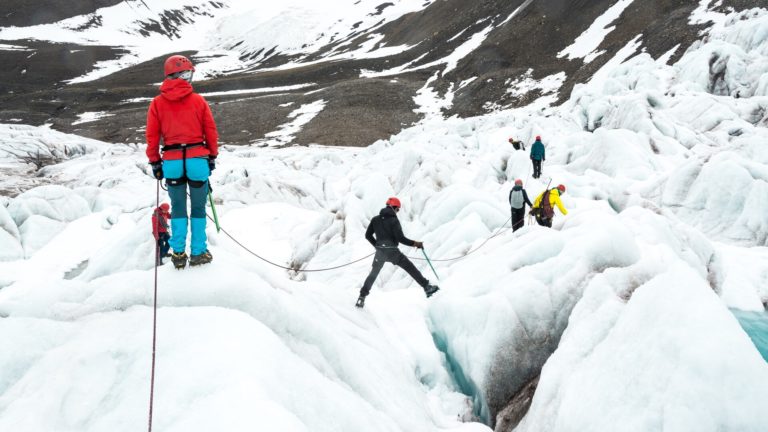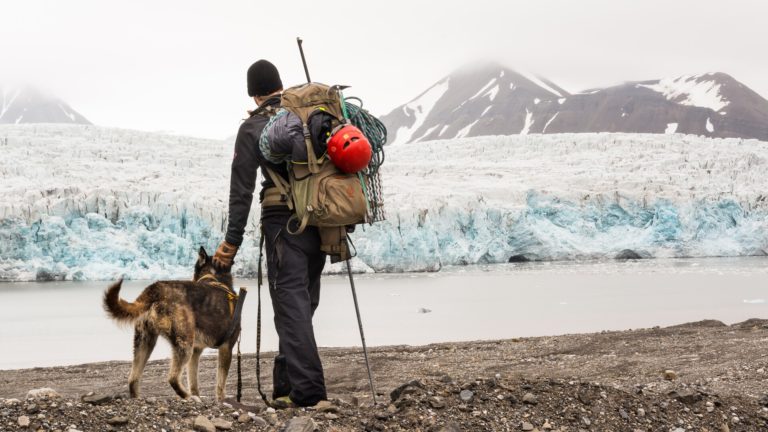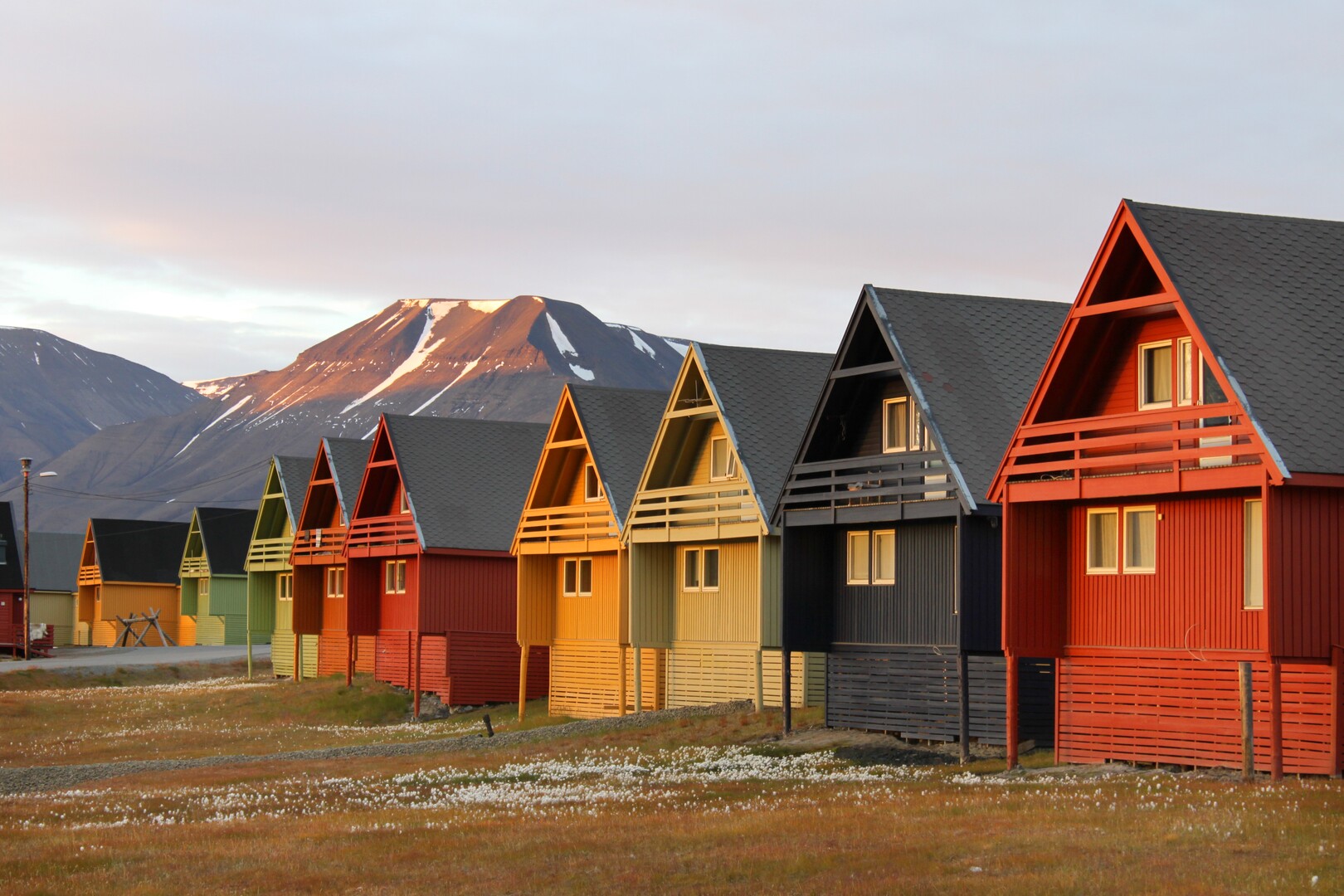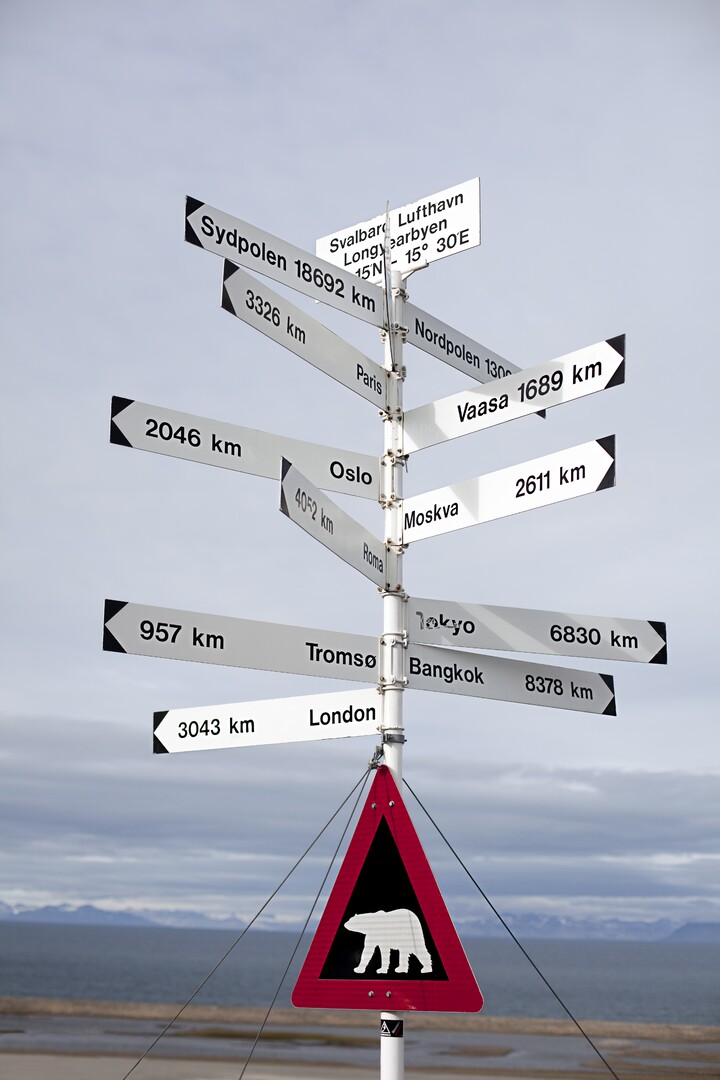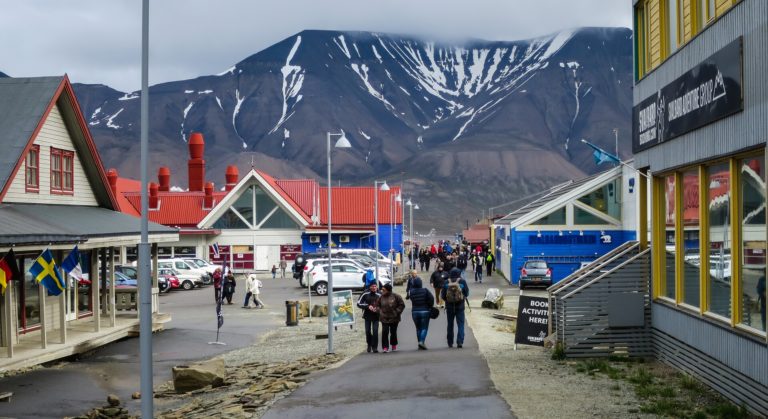More than 60 percent of Svalbard is covered in glaciers, and this Arctic landscape has virtually no trees. Nevertheless, the archipelago appears to be lush and full of colour in the summer. The climate is excellent for preserving objects from times gone by, from the era of mining, whaling and other activities. Old buildings, railroad tracks and other equipment dot the landscape and serve as reminders of a bygone era.
Longyearbyen is an excellent starting point for day trips
Longyearbyen is an excellent starting point for day trips. There are a number of hikes and glacier climbs immediately outside the city. Guided tours to Sarkofagen, Hiorthfjellet or Platåberget are some of the many popular day trips from Longyearbyen.Distances and durations vary, so there is something for everybody. If you are a real outdoors enthusiast, some of these tours may also be combined with kayaking.
The hiking season is from July to September
Depending on the snowmelting, late summer and early autumn are the best times to go hiking in Svalbard. The tundra is wet right after the snow melts, but it gradually dries up, and later in the summer the landscape is perfect for hiking. If you want to go on a multi-day hike, you need a guide to tent in nature. Polar bears are a factor that requires specialized knowledge, but specialized knowledge about boiling water and other factors is also needed to have a safe hike.
Think safety when hiking in Svalbard
Individual travellers in Svalbard have an obligation to familiarize themselves with the Governor of Svalbard’s rules.Visitors who want to explore Svalbard, are strongly recommended to hire a guide from one of the local companies. The varied landscape comes with a wide range of challenges not commonly seen on the mainland. Last, but not least, polar bears are a complicating factor for hiking here. Good practices, both during the day and at night, are important for safe exploration of Svalbard.
Go on a multi-day hike when you have the opportunity
Most people probably think of winter and snow when we mention tenting in Svalbard. Even so, we want to mention summer as an excellent time to go on a multi-day hike. If you have experience with Norwegian mountains and like spending the night in a tent, you will love exploring Svalbard. There are many different tours that have different destinations. Some start in Longyearbyen, but you can also reach more remote areas, such as Prins Karls Forland, by boat.
Glacier hiking in Svalbard
One obvious hiking opportunity in Svalbard is glacial. There are some glaciers near Longyearbyen, but the nicest ones are reached by boat. With an ice axe in your hand and crampons on your feet, you learn the French technique while safely avoiding deep cracks in the ice, high icy towers and other spectacular formations in the ancient ice.
Get to know the local flora and fauna while hiking
Climate change is affecting Svalbard and the Arctic region to an ever increasing degree. The conditions for some species are worsening. At the same time, new species are introduced from warmer climates, because global warming makes it possible for them to survive here. Mammals in Svalbard include polar bears, Arctic foxes, reindeer, as well as some seals and whale species. The most commonly spotted animals on hikes are Arctic foxes and reindeer. Seals are commonly seen on the ice in the winter, but you don’t normally see seals and whales while hiking. Polar bears are rare. Svalbard has several bird cliffs, and if your hike takes you near one of these, you can see the cliff teeming with birds.
How to dress for an Arctic hike
Many of the same clothes you would wear in the mountains on the mainland in autumn will work just fine in Svalbard. Wind and water resistant outer layer and wool (or a technical wool blend) as the layer closest to your body. You will need a hat, mittens or gloves. During the day, it will often be warm enough to shed some layers of clothing, but at night, you will need to layer up. As an outer layer, bring the down jacket for its first hike of the season. Footwear will be dependent on whether or not you are going on a glacier. Generally, a pair of tall and sturdy boots will work just fine. If you are going on a glacier, you will want to wear boots with a stiff sole, as these make the crampons more comfortable to wear.
